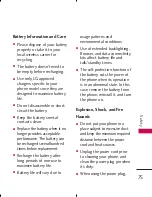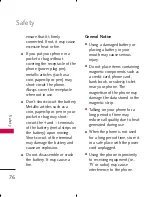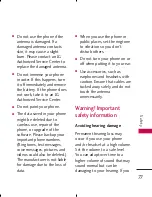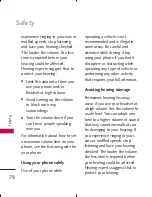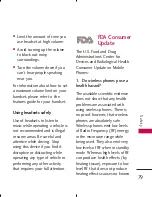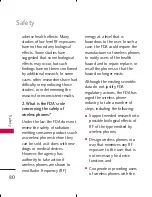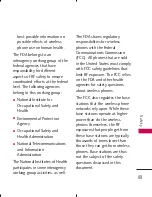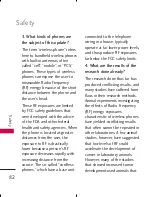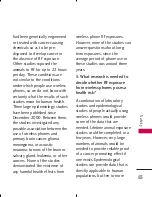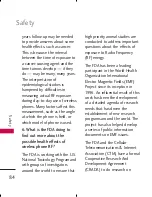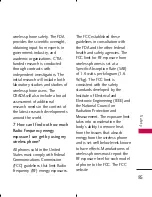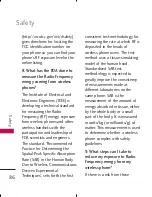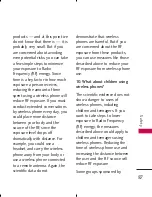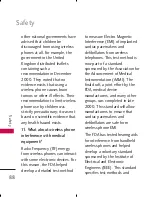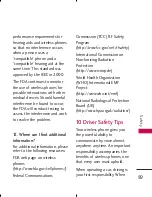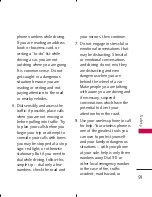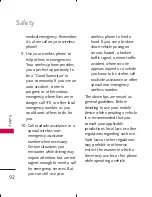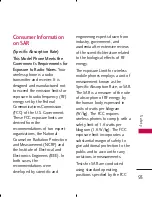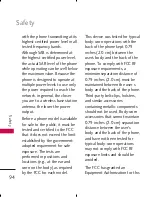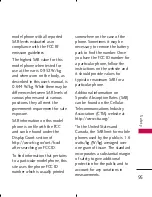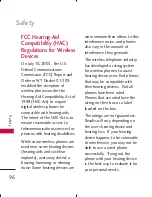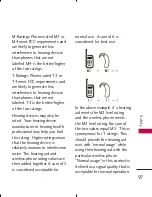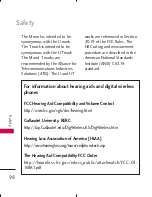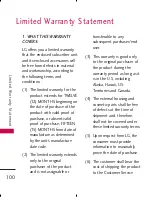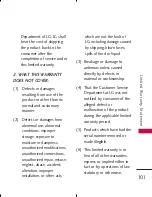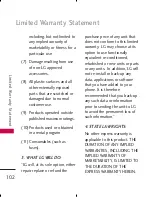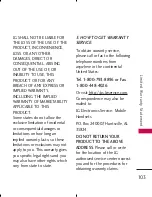
other national governments have
advised that children be
discouraged from using wireless
phones at all. For example, the
government in the United
Kingdom distributed leaflets
containing such a
recommendation in December
2000. They noted that no
evidence exists that using a
wireless phone causes brain
tumors or other ill effects. Their
recommendation to limit wireless
phone use by children was
strictly precautionary; it was not
based on scientific evidence that
any health hazard exists.
11. What about wireless phone
interference with medical
equipment?
Radio Frequency (RF) energy
from wireless phones can interact
with some electronic devices. For
this reason, the FDA helped
develop a detailed test method
to measure Electro Magnetic
Interference (EMI) of implanted
cardiac pacemakers and
defibrillators from wireless
telephones. This test method is
now part of a standard
sponsored by the Association for
the Advancement of Medical
Instrumentation (AAMI). The
final draft, a joint effort by the
FDA, medical device
manufacturers, and many other
groups, was completed in late
2000. This standard will allow
manufacturers to ensure that
cardiac pacemakers and
defibrillators are safe from
wireless phone EMI.
The FDA has tested hearing aids
for interference from handheld
wireless phones and helped
develop a voluntary standard
sponsored by the Institute of
Electrical and Electronic
Engineers (IEEE). This standard
specifies test methods and
Safety
88
Safe
ty
UX300_Eng_080513.qxd 2008.7.15 1:18 PM Page 88


